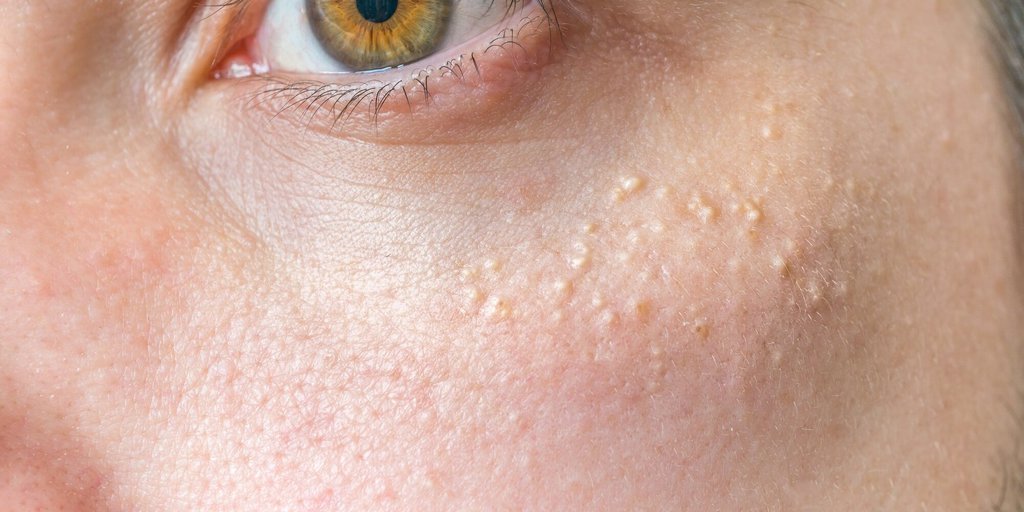Let’s discuss Milia. It’s also known as milk spots. These are small white bumps that can appear around the eyes and on other areas of a baby’s face, as well as virtually anywhere on an adult’s body. Milia, a type of cyst caused by the deposition of keratin beneath the skin’s surface, are frequently confused with clogged pores or acne. However, milia treatment requires a distinct approach.
What Causes an Outbreak of Milia?

Milia can appear because of a variety of factors. One of them is genetics. A person’s susceptibility to developing Milia may be affected by their genes. According to research, individuals with a family history of having this condition are more likely to develop the condition themselves. Also, the skincare products you use may contribute to its development. Sun damage can cause injury and the development of milia as well. This condition can also appear due to hormonal changes, especially in women who experience increased androgens, which can lead to an increase in sebum production. Here are five ways to treat this condition.
Avoid Scratching It

Resisting the impulse to pick or scratch Milia is the first and possibly the most important tip for treating this condition. Otherwise, you risk having an infection or scars or making it worse. Instead, use gentle treatments that encourage the skin’s natural exfoliation.
Using Facial Exfoliants

Using face exfoliants is an excellent way to remove the buildup of dead skill cells, debris, oil, and trapped dirt that can lead to the formation of Milia. You could invest in a gentle scrub or chemical exfoliant that dissolves dead skin and stimulates cell turnover.
Avoiding Heavy Skincare Products

Avoid using harsh chemical-laden moisturizers and makeup formulated with acne-causing ingredients. Instead, choose organic skincare products that are airy and light, such as argan oil, jojoba oil, or rosehip seed oil.
Retinoids Can Help

Retinoids come from vitamin A and can treat a variety of skin conditions, including Milia. It helps remove dead skin cells, stimulates cell turnover, and maintains your skin’s smoothness and tone. You can find retinoid creams, solutions, and serums at your local pharmacy; however, they may not be optimal for individuals with extremely sensitive skin as they can easily cause dryness and irritation.
Using Topical Creams

If topical creams contain active ingredients like alpha hydroxy acids (AHAs), they can be used to treat milia conditions. These ingredients work to soothe the skin and reduce irritation, promoting healthy cell turnover and decreasing milia occurrence.
A Few More Tips
Drinking plenty of water is essential. Dehydrated skin can easily become brittle, flaky, and susceptible to Milia. Be sure to drink at least eight glasses of water a day to maintain a hydrated and healthy epidermis. You can also incorporate hydrating foods such as cucumbers, watermelon, and tomatoes into your diet. Also, daily application of light moisturizer is essential for the prevention of Milia. Choose one that is formulated for your skin type and contains hydrating ingredients such as hyaluronic acid and glycerin. Use it on your face in the morning, at night, and whenever your skin feels dry.